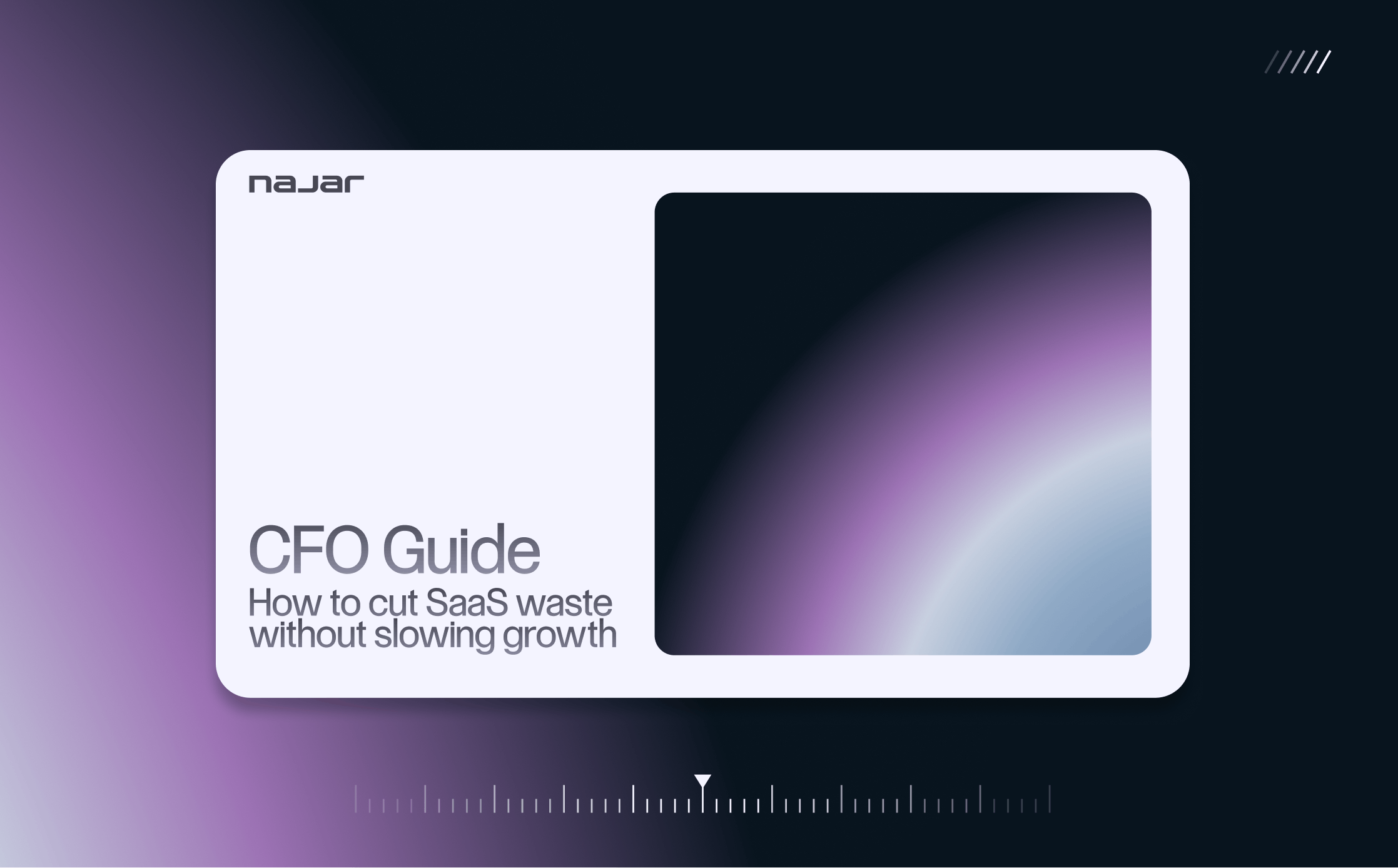Negotiating the best price for your SaaS solution is essential. But it's not always an easy task.
Firstly, because the cost of SaaS is never simply the price of the subscription. In fact, to correctly assess the total cost of ownership (TCO) of a SaaS tool, you also need to take into account integration costs, support and maintenance costs, training costs and installation costs.
Knowledge of the TCO can be very useful, particularly during the negotiation phase with the supplier. Don't forget to include feedback from your teams in these discussions. To assess the right price for SaaS, it is essential to measure its usefulness and its actual impact on your employees' performance.
So, to negotiate the right price, there's nothing better than going back to the figures. In this guide, Najar explains everything you need to know to find the most optimal prices for your SaaS software with complete peace of mind.
How to identify optimal SaaS prices
Know your needs to control your costs
SaaS tools can be a tremendous growth driver for your business, provided you choose the ones that are right for you.
So make sure you only keep the SaaS tools that are essential to your business needs. Don't hesitate to ask your teams for regular feedback: what software are you using the most? Is there any software they don't use at all? Only keep the tools that really serve your company's interests.
Also look at the TCO (total cost of ownership of your SaaS tools). The cost of using a SaaS tool is often higher than the monthly subscription price. Make sure you take into account integration costs, support and maintenance costs, training costs and installation costs.
A good understanding of your TCO can also help you to negotiate more effectively with your SaaS provider when you discuss pricing.
See clearly to make an informed choice
Know your competition
It's not always easy to find your way around SaaS prices! For a similar solution, prices can vary by as much as three times, and the difference is not always obvious to the customer.
You can only make an informed choice if you have a clear view of the different offers on the market. So before you negotiate, take the time to analyse the rates offered by your competitors.
Understanding the main SaaS pricing models
Another complication is that not all SaaS products adopt the same pricing model. To make the right choice, you need to understand how each SaaS works and which pricing model is best for your business.
For example, a large company might prefer a flat rate, which is easier to manage from an accounting point of view. A small start-up might opt for a pay per user, pay per active user or tiered pricing model. If you have a very specific need, opt for a pay per feature model.
To make things clearer, here are the main categories of SaaS pricing models:
Be careful when signing the contract
Pay attention to the contract and the commitment! Cancellation conditions, payment terms, liability... These are all clauses that should be examined before signing any contract with your supplier.
It's also an excellent way of negotiating a better price for your teams. You know you want to use this software for more than a year? Don't hesitate to negotiate with your supplier.
Signing an inadequate or incomplete contract with a supplier can have harmful consequences for your company:
→ unnecessary and avoidable expenses
→ loss of time for users (unsuitable tools, duplication, etc.),
→ loss of efficiency, etc.
To help you, Najar offers a SaaS contract negotiation service to keep your budget under control.
Data strategies: The key to optimised pricing
As you will have gathered, service providers' SaaS pricing strategies are very different from traditional pricing models. Most SaaS pricing models are based on value metrics.
For example, the price of a subscription to an e-mailing tool is calculated on the basis of the number of contacts or the number of e-mails sent. The cost of analysis tools is based on the number of pages analysed, that of advertising tools on the number of clicks, and so on.
The use of value data in the construction of the pricing model enables the price of the product to be aligned with the actual level of use you make of it. This is known as data-based optimisation.
Using the data collected by your company, you can select and even negotiate prices that really correspond to your needs and expectations.
The issues with SaaS pricing
SaaS pricing is a key issue that poses a number of challenges:
→ Service providers: trying to establish the best pricing model for their solution in order to remain competitive, attractive and profitable,
→ for business users: they are looking for the solution best suited to their needs and at the right price in a market that is opaque and difficult to understand.
3 steps to negotiating the best pricing on the user company side
1. Start by collecting data to better understand your needs. The data in question can be quantitative (analytical or demographic data) or qualitative (interviews or surveys): your employees' usage data, market trends, competitors' figures and so on.
2. You can then analyse this data to accurately identify your company's needs, gain a better understanding of how your teams use these solutions and measure the added value provided by the software (KPIs, time saved, efficiency of your teams, etc.).
3. You should also take the time to define the real cost (TCO) and the added value of using the SaaS tool. Are certain functions particularly complex to use and will they require training? Are there frequent updates? Does using SaaS require additional maintenance costs? Thanks to this strategy, you also have concrete figures with which to negotiate rates with your service provider.
Why is this important for the provider?
For service providers, a data-driven strategy means that they can ultimately set a personalised price for each of their customers, while maximising revenue.
By passing on this data to your supplier, you help them to better understand how you use their SaaS solution. You're also giving them concrete ideas for improving the software.
Overcoming the difficulties of finding information
Gathering data to adopt the best data strategy can sometimes prove arduous. Data can also be fragmented or missing, making it difficult to implement a pricing optimisation strategy.
Faced with these challenges, you need to be able to broaden the coverage of the data available to you. In addition to your company's internal data, you might consider collecting external information such as market research or competitor data.
Don't forget to compare the pricing models of the main SaaS providers in your sector of interest. A detailed knowledge of your market, your needs and your competitors will enable you to choose the SaaS solution best suited to your needs and at the optimum price.
Collecting more of your data to obtain the fairest price
The data collected can also be used to identify different profiles from which you can position yourself and obtain the fairest price. To do this, you need to answer a number of questions, including:
→ Which features do you use/need the most?
→ How often do you use your tools?
→ For how long?
→ What price are you prepared to pay for a particular tool?
→ Who uses the tool within the company?
→ Does the number of active users change often?
Based on your answers and the information you gather from them, you'll be able to refine your profile and choose (or negotiate) the pricing that's optimised and aligned with your needs.
To help you in this process, don't hesitate to enlist the help of a SaaS procurement professional like Najar. For example, we offer a procurement service to help you negotiate better deals with your SaaS suppliers.
Optimising SaaS pricing is a complex but essential task. Adopting a data-driven strategy is a good way of finding out your real needs and negotiating the best price for your SaaS solution.
A data-driven acquisition strategy gives you a detailed understanding of your needs, the market and the offerings, so you can make an informed and optimal choice for your tools.
Would you like to optimise the pricing of your SaaS tools thanks to a data-driven strategy? Najar offers you an optimised SaaS inventory service! For more information, please visit our dedicated page.




